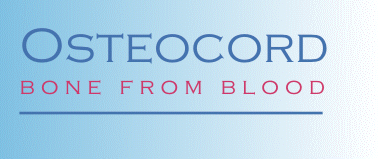A European Union 6th Framework funded project with €2.5 million funding over 3 years |
Welcome
Optimised isolation, characterisation and osteogenic induction of mesenchymal stem cells from umbilical cord blood
There is an urgent clinical requirement for appropriate bone substitutes that are able to replace current autologous and allogeneic grafting procedures for the repair of diseased or damaged skeletal tissues. Mesenchymal stem cells (MSCs), found predominantly in the bone marrow, are able to differentiate into osteogenic, chondrogenic, adipogenic and tenogenic lineages, thus offering considerable therapeutic potential for tissue engineering applications. However, invasive extraction procedures and insufficient viable cell yields have necessitated the identification of alternative tissue sources of MSCs. Growing evidence suggests that umbilical cord blood (UCB) contains a population of rare MSCs that are able to undergo multilineage differentiation.
The aim of the OsteoCord project is to optimise the isolation and expansion of MSCs from human UCB (CB-MSCs). The differentiation capacity of CB-MSCs will be examined, with a specific focus on osteogenesis. The CB-MSCs will be characterised by genomic, proteomic and bioimpedance profiling, pre- and post-osteogenic differentiation, and compared to MSCs isolated from human bone marrow as well as embryonic stem cells.
Why Aristotle? His pursuit of the secrets of alchemy - turning one substance into another - reminds us of our challenge: to turn blood into bone.
What are we?
A collaboration of 9 partner institutions based in the UK, Germany, Denmark and Portugal working across seven Work Packages, over three years.
